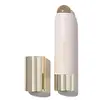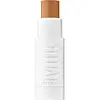What's inside
What's inside
 Key Ingredients
Key Ingredients

 Benefits
Benefits

 Concerns
Concerns

 Ingredients Side-by-side
Ingredients Side-by-side

Isodecyl Isononanoate
EmollientSilica
AbrasiveC12-15 Alkyl Benzoate
AntimicrobialOctyldodecyl Stearoyl Stearate
EmollientIsodecyl Neopentanoate
EmollientPolyethylene
AbrasiveMethyl Methacrylate Crosspolymer
Dicalcium Phosphate
AbrasiveLimnanthes Alba Seed Oil
Skin ConditioningSynthetic Fluorphlogopite
Aluminum Hydroxide
EmollientBHT
AntioxidantGardenia Florida Fruit Extract
Skin ConditioningHelianthus Annuus Seed Oil
EmollientNelumbo Nucifera Flower Extract
Skin ConditioningNymphaea Odorata Root Extract
RefreshingPentaerythrityl Tetra-Di-T-Butyl Hydroxyhydrocinnamate
AntioxidantTocopheryl Acetate
AntioxidantUltramarines
CI 77492
Cosmetic ColorantCI 77491
Cosmetic ColorantCI 77499
Cosmetic ColorantCI 77891
Cosmetic ColorantCI 42090
Cosmetic ColorantIsodecyl Isononanoate, Silica, C12-15 Alkyl Benzoate, Octyldodecyl Stearoyl Stearate, Isodecyl Neopentanoate, Polyethylene, Methyl Methacrylate Crosspolymer, Dicalcium Phosphate, Limnanthes Alba Seed Oil, Synthetic Fluorphlogopite, Aluminum Hydroxide, BHT, Gardenia Florida Fruit Extract, Helianthus Annuus Seed Oil, Nelumbo Nucifera Flower Extract, Nymphaea Odorata Root Extract, Pentaerythrityl Tetra-Di-T-Butyl Hydroxyhydrocinnamate, Tocopheryl Acetate, Ultramarines, CI 77492, CI 77491, CI 77499, CI 77891, CI 42090
Ethylhexyl Palmitate
EmollientBis-Diglyceryl Polyacyladipate-2
EmollientOctyldodecanol
EmollientPolyethylene
AbrasiveSilica
AbrasiveMicrocrystalline Wax
Emulsion StabilisingPentaerythrityl Hydrogenated Rosinate
Mica
Cosmetic ColorantPolyglyceryl-3 Diisostearate
EmulsifyingCopernicia Cerifera Wax
Euphorbia Cerifera Wax
Lavandula Angustifolia Oil
MaskingHelianthus Annuus Seed Oil
EmollientTrifolium Pratense Flower Extract
AstringentAlthaea Officinalis Root Extract
Skin ConditioningChamomilla Recutita Flower Extract
MaskingNymphaea Caerulea Flower Extract
Skin ConditioningTocopheryl Acetate
AntioxidantTocopherol
AntioxidantAscorbyl Palmitate
AntioxidantHydrogenated Polyisobutene
EmollientDisteardimonium Hectorite
StabilisingOctyldodecyl Neopentanoate
EmollientIsononyl Isononanoate
EmollientPentaerythrityl Tetra-Di-T-Butyl Hydroxyhydrocinnamate
AntioxidantButylene Glycol
HumectantWater
Skin ConditioningHdi/Trimethylol Hexyllactone Crosspolymer
Isopentyldiol
HumectantPropylene Carbonate
SolventPhenoxyethanol
PreservativeLinalool
PerfumingCI 77891
Cosmetic ColorantIron Oxides
Ethylhexyl Palmitate, Bis-Diglyceryl Polyacyladipate-2, Octyldodecanol, Polyethylene, Silica, Microcrystalline Wax, Pentaerythrityl Hydrogenated Rosinate, Mica, Polyglyceryl-3 Diisostearate, Copernicia Cerifera Wax, Euphorbia Cerifera Wax, Lavandula Angustifolia Oil, Helianthus Annuus Seed Oil, Trifolium Pratense Flower Extract, Althaea Officinalis Root Extract, Chamomilla Recutita Flower Extract, Nymphaea Caerulea Flower Extract, Tocopheryl Acetate, Tocopherol, Ascorbyl Palmitate, Hydrogenated Polyisobutene, Disteardimonium Hectorite, Octyldodecyl Neopentanoate, Isononyl Isononanoate, Pentaerythrityl Tetra-Di-T-Butyl Hydroxyhydrocinnamate, Butylene Glycol, Water, Hdi/Trimethylol Hexyllactone Crosspolymer, Isopentyldiol, Propylene Carbonate, Phenoxyethanol, Linalool, CI 77891, Iron Oxides
 Reviews
Reviews

Alternatives
Ingredients Explained
These ingredients are found in both products.
Ingredients higher up in an ingredient list are typically present in a larger amount.
Ci 77891 is a white pigment from Titanium dioxide. It is naturally found in minerals such as rutile and ilmenite.
It's main function is to add a white color to cosmetics. It can also be mixed with other colors to create different shades.
Ci 77891 is commonly found in sunscreens due to its ability to block UV rays.
Learn more about CI 77891Helianthus Annuus Seed Oil is the oil derived from the seeds of a Sunflower. Sunflower seed oil is non-fragrant. It is an emollient, meaning it helps to soften the skin.
Sunflower seed oil contains many fatty acids. The fatty acids found in sunflower seeds include (from highest amount to least): linoleic acid, myristic acid, palmitic acid, stearic acid, arachidic acid, oleic acid, and linolenic acid.
These fatty acids help the skin create ceramides. Ceramides play a role in repairing the skin barrier.
Helianthus Annuus Seed Oil helps moisturize the skin. This in turn helps the skin look more rejuvenated and smoother.
Sunflowers are rich in vitamin E.
Historians believe Indigenous cultures of North America domesticated sunflowers before corn. Thus they relied on sunflower oil for a variety of uses. One such use is moisturizing skin and hair.
Sunflower seed oil may not be fungal acne safe. We recommend speaking with a professional if you have any concerns.
Learn more about Helianthus Annuus Seed OilPentaerythrityl Tetra-Di-T-Butyl Hydroxyhydrocinnamate (long name, huh?) is a synthetic antioxidant.
It is used to help stabilize other antioxidants or prevent the color from changing in a product.
As an antioxidant, it helps fight free-radical molecules. Free-radical molecules are capable of damaging our cells and other genetic material. Thus, antioxidants may reduce the signs of aging.
This ingredient is oil-soluble.
Learn more about Pentaerythrityl Tetra-Di-T-Butyl HydroxyhydrocinnamatePolyethylene is a synthetic ingredient that helps the skin retain moisture. It is a polymer.
It is also typically used within product formulations to help bind solid ingredients together and thicken oil-based ingredients. When added to balms and emulsions, it helps increase the melting point temperature.
Silica, also known as silicon dioxide, is a naturally occurring mineral. It is used as a fine, spherical, and porous powder in cosmetics.
Though it has exfoliant properties, the function of silica varies depending on the product.
The unique structure of silica enhances the spreadability and adds smoothness, making it a great texture enhancer.
It is also used as an active carrier, emulsifier, and mattifier due to its ability to absorb excess oil.
In some products, tiny microneedles called spicules are made from silica or hydrolyzed sponge. When you rub them in, they lightly polish away dead skin layers and enhance the penetration of active ingredients.
Learn more about SilicaTocopheryl Acetate is AKA Vitamin E. It is an antioxidant and protects your skin from free radicals. Free radicals damage the skin by breaking down collagen.
One study found using Tocopheryl Acetate with Vitamin C decreased the number of sunburned cells.
Tocopheryl Acetate is commonly found in both skincare and dietary supplements.
Learn more about Tocopheryl Acetate